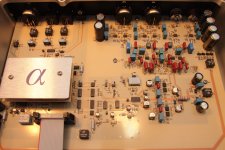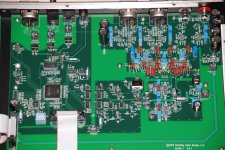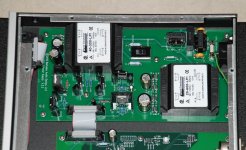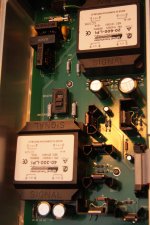Is looking alike enough to determine whether they actually are, or are not, identical?
Pretty much. Components haven't changed, PCB layout hasn't changed.
Therere were only three differencies between the BADA Alpha DAC Series 2 and BADA Reference DAC:
1. Different PCB color - the basic DAC Series 2 has a regular green PCB, the Reference DAC has a skin colored one. That because they probably used ARLON or similar teflon based material.
2. Small daughterboard PCB over the digital filter.
3. Box.
That's it. This is basicly the very same design,
part for part identical.
Reference:
Alpha:
The PSUs are 100% identical:
Reference:
Alpha:
As you can see, there is not much happening in terms upgraded parts for your $11k extra. It is basicly just a nicer box.
It looks like the Reference was made for a specific group of audiophiles, for whom the original Alpha was just too cheap, and too plain looking. OK, they had thrown in that small daughterboard over the digital filter section and changed the PCB material, because they HAD to make some changes to be able to claim it is a different product, not the very same DAC in a nicer box.
But trust me - in terms of BOM (Bill of Materials), those small changes didn't changed much (box excluding). If Berkeley wanted to include them in the Alpha DAC, I doubt the price would have to be higher than $6k using the same marigins they used on the Alpha.
If anything, it only shows how expensive it is to manufacture a nice box and its inpact on the retail price of the product. In case of Berkeley, it is $10k.
I think that many Alpha DAC owners would rather want BADA offered them that small daughterboard upgrade option for their DACs (for like $500 extra, as it probably cost $100-150 to manufacture).
Still it all wouldn't be possible, and Reference DAC wouldn't be competitive in the sub $20k market, if the original BADA Alpha DAC 2 @ $5k wasn't such a killer product to begin with.




